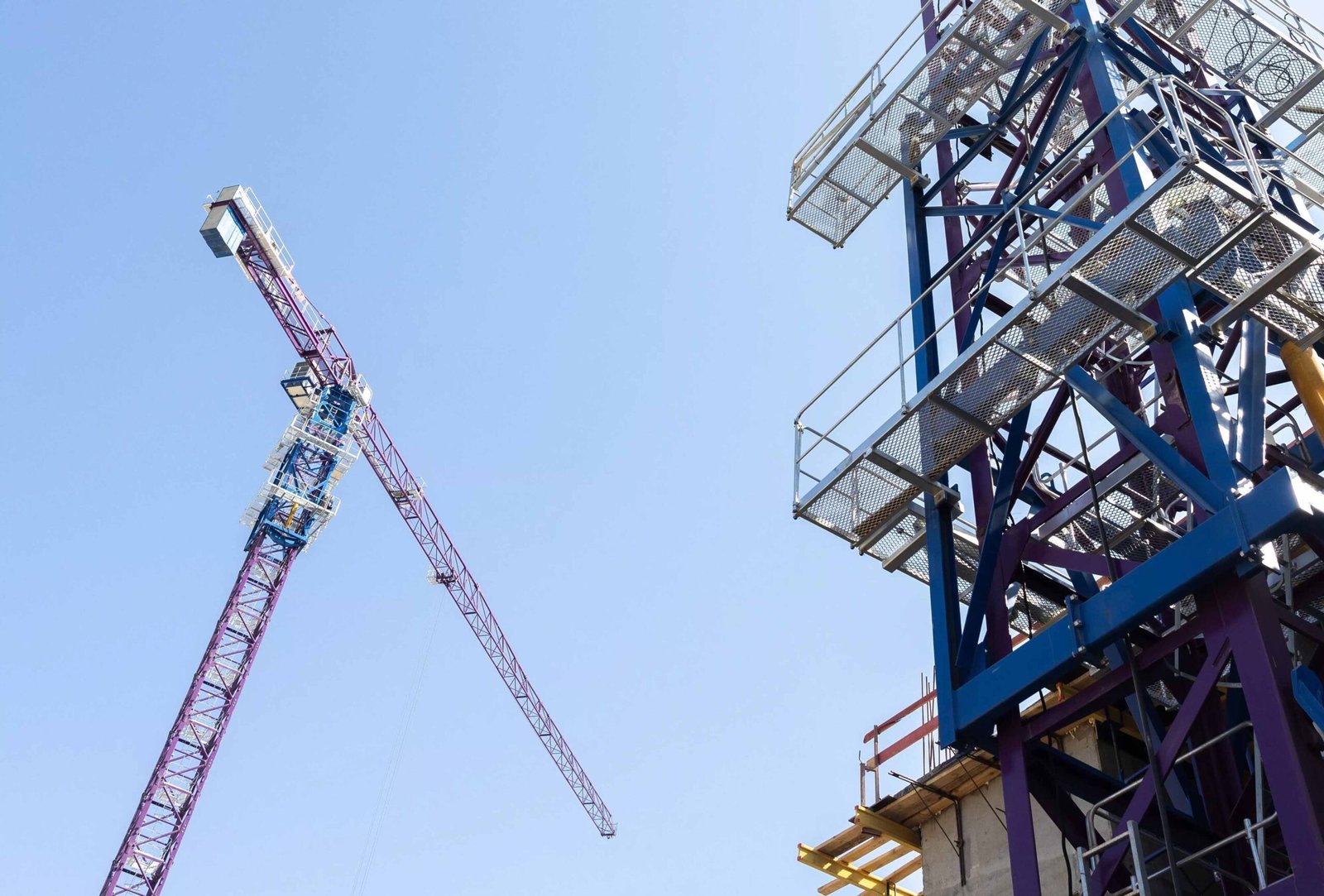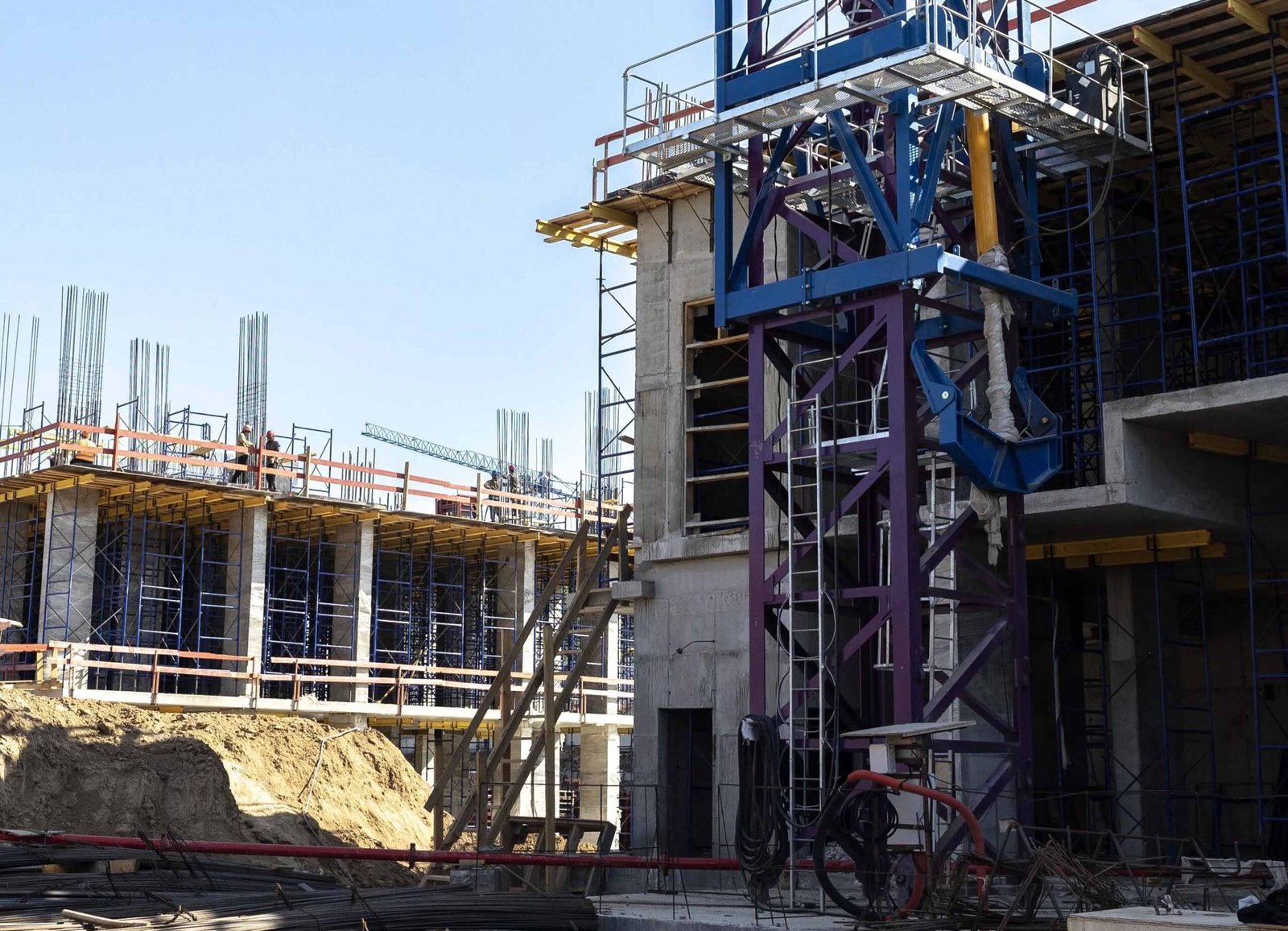
Ever wondered how massive tower cranes get to the top of a building? It's a fascinating process involving engineering, safety measures, and some clever techniques.
Tower cranes1 are assembled piece by piece on-site and rely on a process called "climbing" to reach greater heights.
Cranes don't just appear on top of buildings. They are carefully built and raised in stages, often working with their own strength to get taller. Let’s explore how cranes climb up a building.
How Does a Tower Crane Operator Get to the Top?

Tower crane operators need to be at great heights to control their cranes. But how do they actually get to the top?
Tower crane operators2 use an internal ladder or lift system to ascend the crane’s tower before starting their work.
The process of getting to the top of a tower crane isn’t as simple as climbing a ladder. Operators usually enter the crane through a small lift system or an internal ladder that ascends the crane's vertical column.
The Climb Up
On most construction sites, a crane operator must first enter the operator's cabin at the base of the crane’s tower. They then use a special system to ascend the tower, often a small elevator or a ladder that runs up the inside of the crane.
Once at the top, the operator controls the crane from a comfortable, enclosed cabin that is well-equipped for lifting. These cabins are designed to be ergonomic, with all the controls easily accessible for precise and safe operation.
Additional Systems for Safety
Climbing to such heights can be dangerous, so cranes are equipped with safety systems like safety harnesses, emergency exits, and communication systems to keep the operator in constant contact with the ground crew.
| Climbing Method | Safety Features | Purpose |
|---|---|---|
| Internal Lift | Emergency exit, harness | Safe ascent to the cabin |
| Ladder | Handrails, safety net | Alternative method for ascent |
This method of getting to the top ensures that operators can safely perform their duties even at impressive heights.
How Do They Get Cranes Off the Top of Buildings?

Once a tower crane has completed its task on top of a building, how does it get taken down?
Tower cranes3 are dismantled piece by piece, often using their own lifting capabilities to remove parts.
Taking down a tower crane is an intricate process that often involves the crane itself. The crane operator uses the crane’s own boom and lifting equipment to carefully remove parts, piece by piece.
The Dismantling Process
The process of removing a tower crane starts with the disassembly of the jib, counterweights, and the crane's upper section. These parts are carefully lowered to the ground with the crane’s own lifting system. The crane's base is usually disassembled last, after the higher sections have been removed.
Sometimes, smaller cranes are brought in to assist in dismantling the tower crane, especially when it is difficult or unsafe to use the crane's own lifting mechanisms.
The entire process can take days, depending on the size of the crane and the building’s height. It requires careful coordination and timing to ensure that everything is safely lowered.
| Step in Dismantling | Equipment Used | Purpose |
|---|---|---|
| Lowering the Boom | Tower Crane | Remove the crane’s arm and components |
| Removing Counterweights | Small Cranes | Distribute weight and lift safely |
| Dismantling Base | Cranes, Forklifts | Break down the crane into parts |
This detailed dismantling ensures that the crane is safely and efficiently removed from the site.
How Do Tower Cranes Lift?

How does a tower crane lift such heavy loads? The mechanics behind this are fascinating.
Tower cranes4 use a system of pulleys, gears, and counterweights to lift and move heavy loads with precision.
Tower cranes are powerful machines, capable of lifting hundreds of tons of materials. But how do they manage this feat? The secret lies in their intricate system of pulleys, gears, and counterweights.
The Lifting Mechanism
At the core of a tower crane’s lifting capability is the hoist, which uses a series of pulleys to raise and lower the load. The hoist is powered by an electric motor that drives the crane’s gears, which in turn rotate the drums that hold the lifting cables.
When lifting a load, the crane’s counterweights play an important role in stabilizing the machine. The more weight the crane lifts, the more pressure it exerts on its structure, which is counterbalanced by these heavy weights.
The Boom and Jib
The boom is the horizontal arm that holds the load, while the jib (a secondary, movable part of the crane) provides additional support. Together, these elements allow the crane to reach different heights and positions on the site, extending its range for lifting materials.
| Component | Function | Role in Lifting |
|---|---|---|
| Hoist | Cable system | Raises and lowers the load |
| Counterweights | Weights at the rear | Stabilize the crane during lifting |
| Boom/Jib | Horizontal arm | Supports and moves the load |
The combination of these systems allows tower cranes to lift materials with high precision and efficiency.
How Does a Tower Crane Balance Its Load?

Maintaining balance is crucial for tower cranes. So how do they ensure the load remains steady?
Tower cranes5 use counterweights and precise engineering to balance the load during operation, preventing tipping.
A tower crane’s balance is maintained using counterweights, careful design, and real-time adjustments during operation.
Maintaining Balance
When lifting heavy loads, a tower crane’s structure relies on counterweights placed at the rear. These weights offset the weight of the load on the boom, preventing the crane from tipping. The crane’s hoist and lifting system are also calibrated to ensure that the weight is evenly distributed and balanced throughout the lift.
Additionally, the crane operator has to make constant adjustments to ensure that the load is lifted in a safe, controlled manner. This includes adjusting the position of the jib, fine-tuning the speed of the hoist, and monitoring the wind conditions to prevent any unexpected movements.
| Balance Mechanism | Role in Stability | Adjustment Method |
|---|---|---|
| Counterweights | Prevent tipping | Fixed position |
| Load Distribution | Even out pressure | Manual adjustments |
| Jib/Hoist Control | Fine-tune movements | Operator intervention |
This precise balancing system ensures that tower cranes can lift and move heavy materials safely and accurately.
Conclusion
Tower cranes get up on buildings through a process of assembly and "climbing," using clever engineering techniques to balance and lift loads safely.
-
Understand the step-by-step process of how a tower crane is assembled and raised. ↩
-
Learn the methods crane operators use to reach the top of the crane for safe operation. ↩
-
Find out how tower cranes are safely taken down using their own lifting capabilities. ↩
-
Learn about the mechanisms that make tower cranes capable of lifting heavy loads. ↩
-
Understand the systems that prevent tipping and ensure the crane lifts loads safely. ↩






